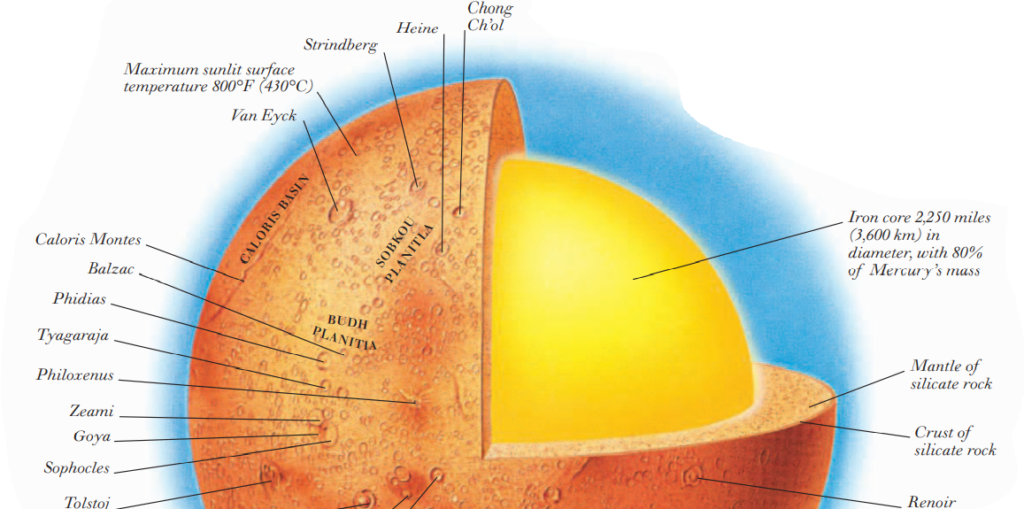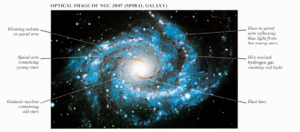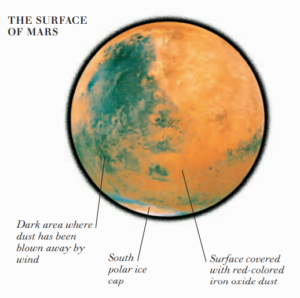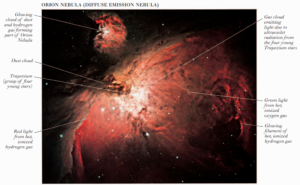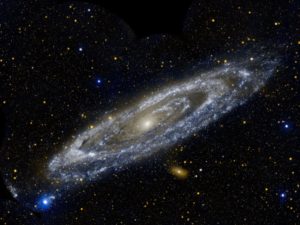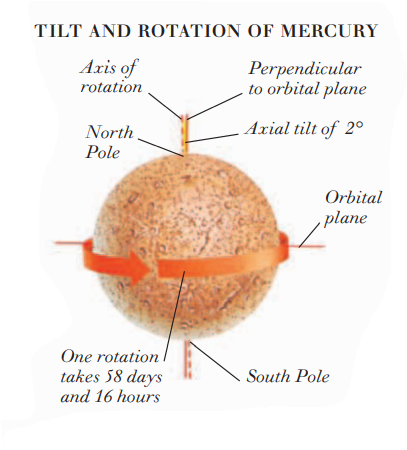
MERCURY IS THE NEAREST PLANET to the Sun, orbiting at an average distance of about 36 million miles (58 million km). Because Mercury is the closest planet to the Sun, it moves faster than any other planet, traveling at an average speed of nearly 30 miles (48 km) per second and completing an orbit in just under 88 days.
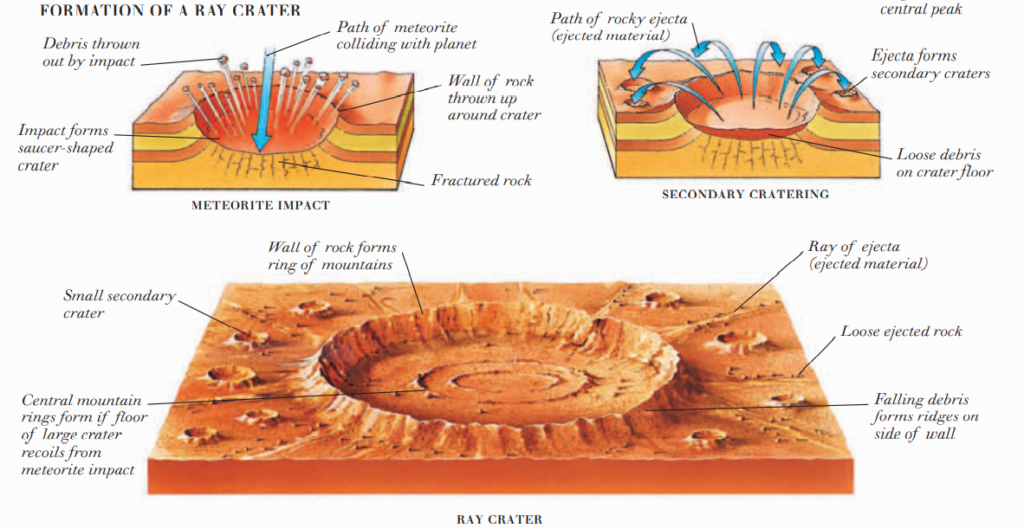
although there are also smooth, sparsely cratered lava-covered plains. The Calories Basin is the largest crater, measuring about 800 miles (1,300 km) across. It is thought to have been formed when a 38-mile- (60-km-) diameter asteroid hit the planet and is surrounded by concentric rings of mountains thrown up by the impact. The surface also has many clifflike ridges (called rupes) that are thought to have been formed when the hot core of the young planet cooled and shrank about four billion years ago, buckling the planet’s surface in the process. The planet rotates about its axis very slowly, taking nearly 59 Earth days to complete one rotation. As a result, a solar day (sunrise to sunrise) on Mercury is about 176 Earth days—twice as long as the 88-day Mercurian year. Mercury has extreme surface temperatures, ranging from a maximum of 800°F (430°C) on the sunlit side to -270°F (-170°C) on the dark side. At nightfall, the temperature drops very quickly because the planet’s atmosphere is almost nonexistent. It consists only of minute amounts of helium and hydrogen captured from the solar wind, plus traces of other gases.

